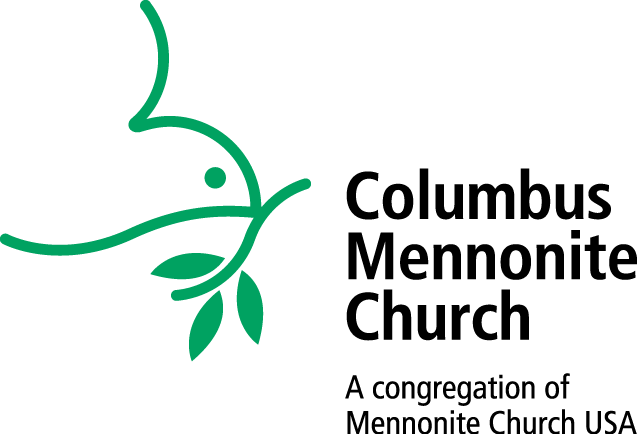“…so that you may discern what is good…” | August 27
Texts: Exodus 1:8-14; Romans 12:1-8
After our Twelve Hymns series, and last week’s anniversary celebration, we are finally back on the lectionary. The lectionary provides us with a set of readings from scripture each week. We join Protestant and Catholics in reflecting on the same readings. We won’t stick with the lectionary every week starting now, but it’s a home base.
Romans 12 and the opening story of Exodus are two of today’s readings. We’re bringing our own angle. Today marks the beginning of our First Fruits pledging process, when all of us are invited to consider how we contribute financially to the mission of this congregation. So we’re calling this Stewardship Sunday. If the word “Stewardship” doesn’t work for you, we could call it “Jesus-talked-a-whole-lot-about-economics-and-money-and-we-should-too-so-it’s-more-about-a-way-of-life-than-a-single-Sunday Sunday.”
Romans 12:2 “Do not be conformed to the pattern of this world, but be transformed by the renewing of your minds, so that you may discern what is the will of God – what is good and pleasing and whole.”
There are some passages in the Bible where you almost have to be a cultural anthropologist to understand what’s going on. Research the setting, parse the language, scan the context for clues. This isn’t one of those passages. What Paul wrote to the Romans a couple thousand years ago could have been written directly to us today.
Richard Rohr has offered an updated translation for what shows up here as “world.” He suggests plugging in the word “system” to get at what the various New Testament writers mean when they talk in this way.
So with that gloss, here’s how these words read: “Do not be conformed to the system, but be transformed by the renewing of your minds, so that you may discern what is the will of God – what is good and pleasing, and whole.”
From an…
Strangers becoming siblings | August 20 | Anniversary Sunday
Text: Ephesians 2:11-22
Last month, at the Mennonite Church USA Convention in Orlando, there was a big timeline along one side of the delegate hall. It was kind of like the one we have for CMC in the fellowship hall this weekend, but longer – in size and time span. It was maybe 40 feet long, give or take. It began in the 1500’s and led up to the present. On it, were written key events in the Anabaptist and Mennonite story. 1525, Zurich Switzerland, the first adult baptisms. 1660; publication of the Martyrs Mirror, telling the stories of Christian martyrs through the ages; 1789, the first German speaking Mennonites settle in Catherine the Great’s Russia. And so on. We were about to begin the Future Church Summit, and denominational leaders wanted to help us remember where we had been before looking toward where we are going.
There was lots of open space on the timeline, with differently colored markers available for anyone who wanted to add a key event. Walking through the centuries and reading the additions was a fascinating experience of what happens when you crowd source your collective history. Alongside the more standard highlights of immigration waves, official church statements, and the creation of institutions, were less told stories, some painful. Like the three boarding schools Mennonites used to run that tore Native American children from their families and culture.
A few people had felt unrestricted by the chronological range of the timeline, with someone writing at the very beginning, “And on the seventh day, God rested” and someone squeezing in even before that “Big bang.” Someone else had extended the timeline forward two years to the next national gathering in 2019, writing “Membership Guidelines abolished by delegates.” The Membership Guidelines currently in place call for the review of…
A cosmic hallelujah | August 13
Twelve Hymns Project: Praise God from whom
Text: Psalm 148
Psalm 148 is like one of those emails you get where the sender entered all the recipients in the To: box rather than Blind Carbon Copy. This Psalm is the text we used for our Call to Worship this morning. It’s an invitation to what theologian Douglas Ottati refers to as “the party of existence.” And we are invited. Only rather than simply getting our own invite, with all the other recipients hidden, like that lovely Blind Carbon Copy feature allows, we get the full catalogue of invites, which we scan through first before getting to our part.
The sender must have had two lists going, and begins with the first: those in “the heavens” or “the heights.” It includes things unseen and seen: angels, hosts; sun, moon, and stars; the waters above. The second list is “you who are on earth.” It ranges from sea monsters to winged birds, wild beasts to domesticated animals to creeping things to fruit trees and cedars. To make sure we get the message that we’re all invited, it names kings and peoples of the earth, young men and women, old and young. And the invitation is not limited to carbon-based life forms. Even the mountains and hills, fire, various forms of precipitation, even the wind gets an invite.
It’s like when the person who’s working the booth at the skating rink gets on the loud speaker and announces: “the next skate will be an all skate, and all skate.” The lights go down, everyone gets up from their seats, the disco ball kicks into gear, and before you know it everyone and everything is on the floor, swirling around the same center of gravity, gliding to the same beat.
The party of existence is an all…
A Tale of Two Hymns | Aug. 6, 2017
12 Hymns Project: Come thou fount, and Rain down
Texts: Matthew 5:43-48
“It was the best of times, it was the worst of times, it was the age of wisdom, it was the age of foolishness, it was the epoch of belief, it was the epoch of incredulity, it was the season of Light, it was the season of Darkness…”
You might recognize these as the opening lines to A Tale of Two Cities by Charles Dickens, and even though I’ve never read it, I couldn’t help be think of these words as I prepared the sermon for this morning. Months ago when we were trying to decide how to fit 12 hymns into 10 weeks of worship services, Rain down and Come thou fount were lumped together mostly because they contained pretty overt water imagery and they both were prayers of petition to God to rain down blessings. That seemed like enough to lump them together, so we did. And we planned to figure the rest out later.
Well, later is now, and the more I tried to synthesize these two sets of lyrics into one coherent message during the last few days, the more I found to contrast in them. Yes, they both draw on images and metaphors about God’s love being like water: falling down, flowing, raining, streams and fountains, thirst quenching, life-giving, saturating water. Yes, as Joel mentioned a few weeks ago when he talked about the importance of paying attention to the audience of a text, both of them are directed to God as prayers. Yes, they both are prayers that, at least in part, petition God to rain down blessings and love.
But then they start to diverge a bit.
First, let’s look a little more closely at Come thou fount. Now I realize we haven’t sung it yet, so let me…
The music of grace | July 30
Twelve Hymns Project: Amazing Grace
Texts: Exodus 34:5-9; Acts 9:1-9
Joel and Abbie Miller
Joel
Anne Lamott wrote: “I do not understand the mystery of grace — only that it meets us where we are and does not leave us where it found us.”
Maybe this helps explain the popularity of “Amazing grace.” The song has been so widely embraced, it spans all kinds of communities that otherwise have little in common, religious and secular. We are at so many different places – in our life experience, in our ideas about the world. Grace meets us where we’re at, and so, it seems, does this song that features grace as its protagonist.
A case in point for this breadth of appeal is that these lyrics, written by an English former slave ship captain, John Newton, have also become adopted among the African American spirituals. Descendants of the enslaved and the enslavers need not understand all the mysteries of grace in order to know we need it.
Abbie
The hymn “Amazing Grace” as we know it, has a grace filled history as well. It was originally written as a reading or poem that may have been chanted instead of sung. It was not even seen as one of John Newton’s finest works in Britain. One biographer calls Newton , in reference to this song, an “unashamedly middle brow lyricist for a low brow congregation.” Out of the 150 words, only 21 are more than one syllable.
Despite this, the song took hold in the United States during the Second Great Awakening and the development of shape note singing. Amazing Grace was used during tent revival meetings to punctuate fervent sermons, with added repetitive verses. It was sung to around 20 different melodies before it became widely known and published with a melody named “New Britain”.
The hymn was printed in hymnbooks…

